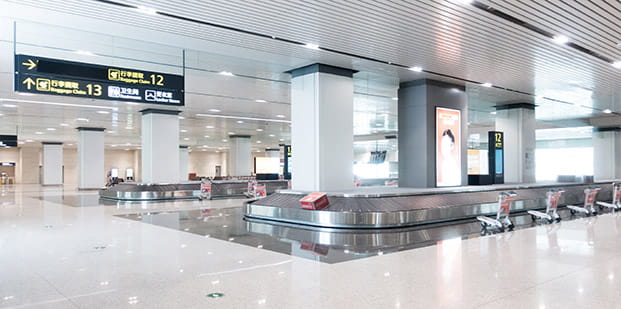
As the number of patients with the Coronavirus increases daily, travel bans instigated to mainline China, and airline companies cease flying to Beijing, many are left with one pressing question: how serious really is this epidemic?
Certainly, the control of the outbreak is being taken extremely seriously: Chinese cities are on lock-down, internal travel suspended, feverish patients are compulsorily tested in government facilities, quarantine enforced, global airport screening performed, and business activities are halted as there are further extensions to the Chinese New Year holiday. Even when countries rescue their nationals – as Australia, the US, Japan, and the UK, are doing – those rescued will undergo two weeks of isolation, as symptoms of the Coronavirus are anxiously awaited.
 Despite these measures, cases have cropped up in several cities. From Canada to Australia, 18 cities outside of mainline China are now reporting a total of 80 confirmed cases. In Hong Kong, schools have been closed and the high-speed rail link into West Kowloon is shut. In Singapore, where at least 5 cases have now been identified, businesses have been urged to follow flexible working patterns to allow homeworking. It’s long been said that when China sneezes the world catches a cold, but it’s not only international share prices that have been recently impacted. Business function outside of China is now being affected. At Collinson, we are both advising companies of the issues that will aid them and their employees during this crisis, and also instigating the same processes ourselves in our regional centres in China, Hong Kong, and Singapore, as well as offices distant from the epicentre of the virus. This is a time to walk the walk.
Despite these measures, cases have cropped up in several cities. From Canada to Australia, 18 cities outside of mainline China are now reporting a total of 80 confirmed cases. In Hong Kong, schools have been closed and the high-speed rail link into West Kowloon is shut. In Singapore, where at least 5 cases have now been identified, businesses have been urged to follow flexible working patterns to allow homeworking. It’s long been said that when China sneezes the world catches a cold, but it’s not only international share prices that have been recently impacted. Business function outside of China is now being affected. At Collinson, we are both advising companies of the issues that will aid them and their employees during this crisis, and also instigating the same processes ourselves in our regional centres in China, Hong Kong, and Singapore, as well as offices distant from the epicentre of the virus. This is a time to walk the walk.
 In order to appreciate the severity of the epidemic, however, we clearly need to compare it to other outbreaks. In the last 20 years, we have not been short of possible comparisons. From SARS, and Swine Flu, to MERS and Zika, viruses have quickly traversed the global village time and time again. Added to these recent epidemics are the two largest outbreaks of Ebola in history, mercifully mostly contained in-country. It is the seasonal flu virus, however, to which I will compare the current Coronavirus outbreak. Transmitted in much the same way as the new Coronavirus, the flu kills over 300,000 people globally each year; in bad years up to 600,000. A much larger group of people are so affected with the flu infection that they require hospitalisation – up to 5 million people each year. As flu happens year in, year out, it hides in plain sight, attracting few press reports. Stepping back from the human tragedy of each severe case, some have stated that the Coronavirus might prove to be not so dissimilar to influenza. After all, we have had 6,000 confirmed cases so far and only around 2% of cases have sadly proved fatal – with Ebola infection this figure is nearer 70%. Furthermore, it’s worth bearing in mind that even the 2% figure might be an overestimate as it’s likely that far more people than 6,000 have had the illness – these are just those who have received laboratory testing. Seen from this perspective, flu and the new Coronavirus might be somewhat similar.
In order to appreciate the severity of the epidemic, however, we clearly need to compare it to other outbreaks. In the last 20 years, we have not been short of possible comparisons. From SARS, and Swine Flu, to MERS and Zika, viruses have quickly traversed the global village time and time again. Added to these recent epidemics are the two largest outbreaks of Ebola in history, mercifully mostly contained in-country. It is the seasonal flu virus, however, to which I will compare the current Coronavirus outbreak. Transmitted in much the same way as the new Coronavirus, the flu kills over 300,000 people globally each year; in bad years up to 600,000. A much larger group of people are so affected with the flu infection that they require hospitalisation – up to 5 million people each year. As flu happens year in, year out, it hides in plain sight, attracting few press reports. Stepping back from the human tragedy of each severe case, some have stated that the Coronavirus might prove to be not so dissimilar to influenza. After all, we have had 6,000 confirmed cases so far and only around 2% of cases have sadly proved fatal – with Ebola infection this figure is nearer 70%. Furthermore, it’s worth bearing in mind that even the 2% figure might be an overestimate as it’s likely that far more people than 6,000 have had the illness – these are just those who have received laboratory testing. Seen from this perspective, flu and the new Coronavirus might be somewhat similar.
 The big difference between flu and the Coronavirus, however, is that we can’t realistically treat flu by quarantine, shutting down the normal processes of everyday life and business. When influenza occurs, it starts in multiple sites around the globe at the same time each year. Tens of thousands of epicentres. The only ways to avoid the flu are by getting the annual vaccine, avoiding sick people, and by washing your hands regularly.
The big difference between flu and the Coronavirus, however, is that we can’t realistically treat flu by quarantine, shutting down the normal processes of everyday life and business. When influenza occurs, it starts in multiple sites around the globe at the same time each year. Tens of thousands of epicentres. The only ways to avoid the flu are by getting the annual vaccine, avoiding sick people, and by washing your hands regularly.
This is not the case with the Coronavirus, however. As it recently started from one source, spreading outwards as more are infected, we have an opportunity to quash its course. We don’t have a vaccine as yet. But with the rigorous application of quarantine in China, closing local schools and limiting social gathering, altering work and leisure activities, screening and preparing, it might well be possible to avoid the severe disease and fatalities that would otherwise follow worldwide. In this light, adapting what we do is essential for all of us: individually, for our organisations, and those further afield.







